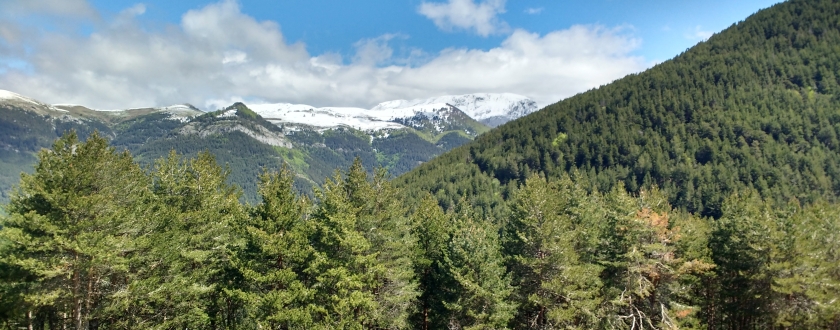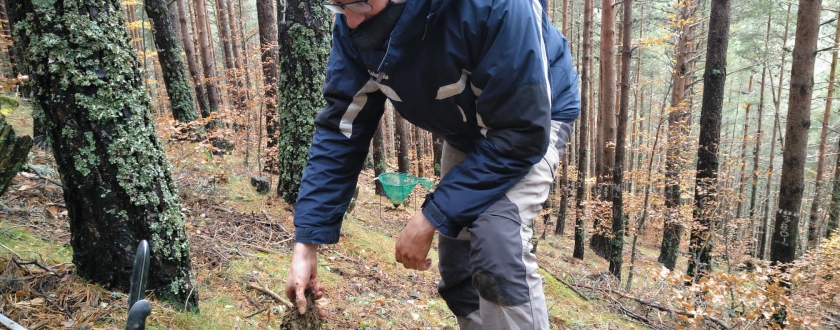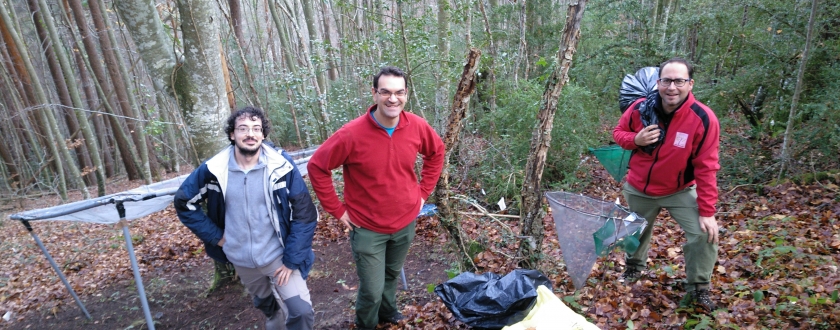Pyrenean pine forest adaptation to climate change: controlling stand density according to climate type
Description of the case study
The circulation of nutrients in pine forests is affected by the biogeoclimatic conditions and type of stand management. The uncertainty produced by climate change in terms of future pine forest growth patterns can be reduced with the use of models that simulate ecological processes and the effects of different forest management strategies.
This study explores said models in order to understand pine forest variation depending on precipitation, evapotranspiration, and the intensification of lumber extraction, which can affect the availability of nutrients. The research proposes different forms of management (contextual to the space) that serve to adapt Navarre’s forestry to climate change.
The key results from research in two stands are described: one in the Pre-Pyrenees (Aspurz) and another in the continental subalpine Pre-Pyrenees (Garde) under two climate change scenarios (A2: severe, B2: moderate).
» Analysis of the nutrient cycle.
» Analysis of its effect on growth and productivity.
» Modelling and simulating ecological processes.
» Forest management recommendations.
» Using models that allow ecological processes to be simulated in addition to the effects of forest management.
» Reducing uncertainty in terms of future stand growth patterns.
» Facilitating Navarre forestry’s adaptation to climate change and the new forest management and socio-economic trends.
In more Mediterranean stands, such as Aspurz, the effects of climate change in terms of increased water stress will reduce their productivity. In this case, preventive clearing is a possible tool to reduce competition between trees. However, clearing also warms and dries fallen leaves, reducing decomposer activity and slowing the circulation of nutrients as a result. It is therefore important to maintain shadow cover and part of the undergrowth.
Another option would be to encourage mixed forests, which are passively favoured due to reduced forestry activity as a result of rural depopulation.
In the case of the Garde pine forest, climate change will not cause such negative impacts because increased temperatures will allow for a longer tree growing season, and droughts will not be as intense.
Caso desarrollado e implementado como una medida de adaptación al cambio climático.
The Sciences Department of the Public University of Navarre
Additional Information
Personnel (number of individuals, training, and dedication percentage):
The Environment and Ecology group from the UPNA involved in the study of Navarre’s Pyrenean forests is composed of five individuals with doctorates and two individuals with masters degrees.
Means used:
Their own and those available at the UPNA’s Superior Technical School of Biosciences and Agricultural Engineering (all-terrain vehicle, ecology laboratory, computer equipment, statistical and FORECAST modelling software).
The pine tree growth simulator (FORECAST-Climate) is not a spatial model (it does not take into account the arrangement of trees in the space), but it is deterministic (they are all described by the model’s user; it does not produce random events). On the other hand, the modelling exclusively uses pine, without the presence of mixed masses.
Total investment: 105,300.00 euros
Investment executed as a percentage of the total: 100%
Annual breakdown: 1st year: 2013 (40%) - 2nd year 2014 (30%) - 3rd year 2015 (30%).
Financing:
Self-funding (%): 0%
External source: 100%, Spanish Ministry of Economy and Competitiveness, project referenced AGL2012-33465
No planning instrument
01/01/2013 - 12/31/2015 (2 years - completed)
Reference information
PYRENEAN CLIMATE CHANGE OBSERVATORY
Avenida Nuestra Señora de la Victoria, 8
22.700 - Jaca
Huesca - España
+34 974 36 31 00
info_opcc@ctp.org








